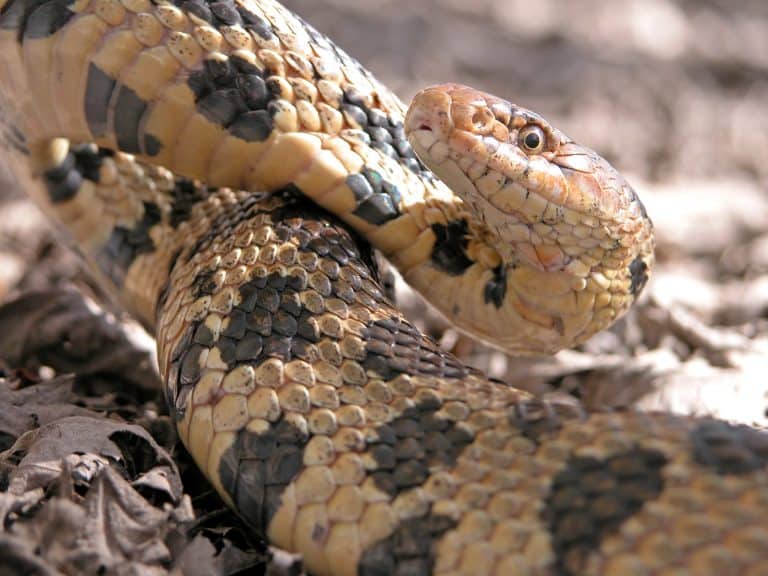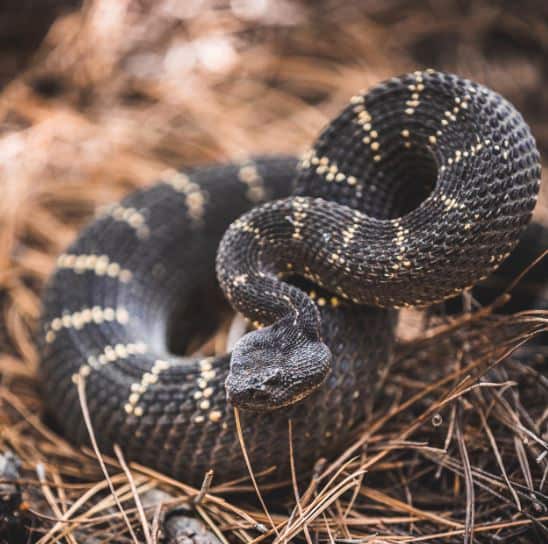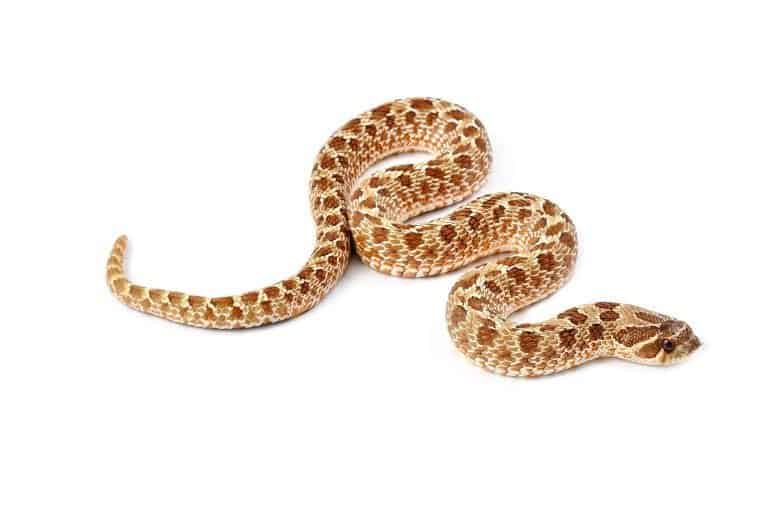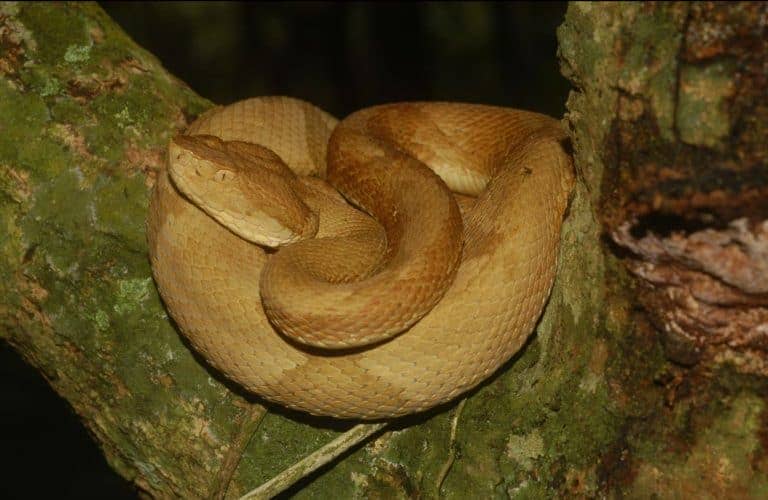🧠 Introduction
Ever heard of a snake that smells like a fox? Meet the Fox Snake—a non-venomous, clever, and misunderstood serpent that calls North America home. Named for its musky, fox-like odor, this reptile plays a vital role in nature but is often misjudged due to its looks. Let’s unravel the scales on this sly snake’s story.
🔬 Taxonomy and Classification
Scientific Name: Pantherophis vulpinus (Western Fox Snake)
Subspecies:
-
Pantherophis vulpinus – Western Fox Snake
-
Pantherophis gloydi – Eastern Fox Snake
Belonging to the Colubridae family, fox snakes are closely related to rat snakes. Non-venomous and docile, they’re excellent rodent hunters and ecosystem helpers.
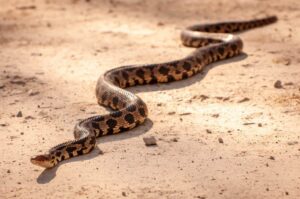
📏 Physical Description
Fox snakes are medium to large-sized serpents, typically measuring 3 to 6 feet in length. Here’s what sets them apart:
-
Color: Yellowish to light brown with dark brown or black blotches running down their back.
-
Head: Slightly broader than the neck, coppery or reddish in color.
-
Belly: Yellow with alternating black checkerboard patterns.
Their coloring makes them look dangerously similar to copperheads, which causes a lot of confusion—and sometimes unwarranted fear.
🗺️ Distribution and Habitat
Fox snakes are native to the Midwest, including:
-
United States: Wisconsin, Michigan, Illinois, Iowa, Minnesota
-
Canada: Southern Ontario (especially the eastern fox snake)
They thrive in prairies, woodlands, marshes, farmlands, and even suburban areas. Thanks to their adaptable nature, they’ve learned to live near human developments—though that often puts them at risk.
🐍 Behavior and Temperament
Fox snakes are diurnal—they’re most active during the day. They’re typically calm, but if threatened:
-
They rattle their tails against dry leaves to mimic a rattlesnake.
-
They may strike or release a foul-smelling musk (that famous “fox” smell) as a defense.
-
Despite the bluff, they’re non-aggressive and non-venomous.
They’d much rather slither away than fight.

🍽️ Diet and Hunting
Fox snakes are constrictors—they wrap around their prey and suffocate it before swallowing whole.
Their menu includes:
-
Mice and rats (a farmer’s best friend!)
-
Frogs
-
Small birds and bird eggs
They’re ambush predators, relying on stealth and patience to score a meal. Their excellent sense of smell helps them track prey even in darkness.
🐣 Reproduction and Lifecycle
Fox snakes mate in spring, after emerging from hibernation. Here’s their reproductive timeline:
-
Mating season: April–June
-
Egg-laying: June–July
-
Clutch size: 6–30 eggs
-
Incubation period: Around 60 days
Young fox snakes hatch in late summer and are about 10–15 inches long. They grow fast and can live over 15 years in the wild—even longer in captivity!
🦅 Predators and Threats
Fox snakes face many natural threats, including:
-
Birds of prey (hawks, eagles)
-
Coyotes and raccoons
-
Large snakes
But the greatest threat is humans—whether through habitat destruction, road mortality, or mistaken identity (people often kill them, thinking they’re copperheads or rattlers).
🚨 Conservation Status
The Western Fox Snake is not federally endangered, but the Eastern Fox Snake is considered threatened in parts of its range due to habitat loss.
Protection efforts include:
-
Wetland conservation
-
Public education
-
Roadway fencing near snake habitats
Awareness can save their lives.
🆚 Fox Snake vs. Other Look-Alikes
People often confuse fox snakes with venomous copperheads, but there are clear differences:
| Feature | Fox Snake | Copperhead |
|---|---|---|
| Head Color | Reddish or coppery | Copper, blends with body |
| Pattern | Blotches, more scattered | Hourglass bands |
| Behavior | Tail rattling, non-venomous | Venomous, less warning |
| Pupil Shape | Round | Slit-like (vertical) |
Remember: Fox snakes won’t harm you—only the mice in your barn!
🌿 Importance in Ecosystem
These slinky hunters are nature’s pest control. A single adult fox snake can devour dozens of rodents a year, making them invaluable in:
-
Agriculture (reducing crop damage)
-
Biodiversity (balancing food chains)
-
Habitat health (as an indicator species)
🏡 Keeping Fox Snakes as Pets
Yes, fox snakes can make good pets—but do your homework.
Legal check first! They’re protected in some regions.
Care basics:
-
Enclosure: 40+ gallon tank
-
Substrate: Aspen bedding or newspaper
-
Temp gradient: 75–85°F with a basking spot
-
Feeding: Pre-killed mice every 7–10 days
They’re docile, easy to handle, and low-maintenance, which makes them great for beginners—if it’s legal where you live!
🧙 Myths and Misconceptions
Let’s bust some tall tales:
-
Myth: Fox snakes are venomous
Truth: 100% false. They don’t have venom glands. -
Myth: They chase people
Truth: Nope. If they move toward you, they’re probably just trying to escape in that direction. -
Myth: They’re rattlesnakes
Truth: They just mimic rattlesnakes with tail vibration.
⚠️ Tips for Safe Encounters
If you see a fox snake:
-
Stay calm—they’re not out to get you.
-
Don’t pick them up unless you’re trained.
-
Educate others—help reduce fear and unnecessary killings.
If one shows up in your garage or yard, gently usher it back outside or call a wildlife rescue service.
🌍 Human Impact and Responsibility
Fox snakes are victims of misunderstanding and encroachment. We owe them:
-
Respect
-
Protection of their habitats
-
Advocacy for education and conservation
Even simple actions—like driving slower in snake zones—can save lives.
🔚 Conclusion
Fox snakes are more than just misunderstood reptiles. They’re vital to ecosystems, gentle around humans, and beautiful in their own right. By learning to recognize and respect these serpents, we’re not just helping the snakes—we’re helping ourselves and the planet.
Let’s give the fox snake the reputation it truly deserves.
❓ FAQs
Q1: Are fox snakes venomous?
No, they are completely non-venomous and harmless to humans.
Q2: What do fox snakes eat in captivity?
Mostly pre-killed mice, offered every 7–10 days.
Q3: How long do fox snakes live?
Up to 15 years in the wild and 20+ years in captivity with good care.
Q4: Can fox snakes climb?
Yes! While mostly terrestrial, they’re good climbers when needed.
